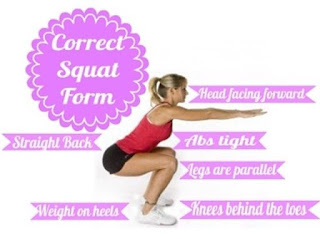Find your age catagory & read your tips!
Giverny - Why in your 20’s?
- Establish healthy lifetime habits, accountability with friends
- Strength Training Classes of Personal Coach - increase lean muscle, boost your metabolism, and burn calories
- Cardio Classes, Personal Coach, or Cardio Circuits for heart health and burning calories
- Stretching Classes to prevent injuries that hinder your workout
- Proper technique from trained instructors/trainers who can answer your questions and educate you
- Maintain a healthy weight and muscle strength
- Pre/Post baby- safe and proper technique
- Free babysitting weekday mornings
- No membership/Sign-ups/No Hassle
TIPS:
- Combine healthy eating with exercise for optimal health
- Come with friends
- If deconditioned, start slowly. Listen to instructors/trainers' options for strengthening & building up your cardio endurance. Example, 10 minutes on the treadmill the first week, or stay or half of a cardio class.
- Drink LOTS of water!
- Wear good, supportive shoes
Giverny- Why in your 30's?
- Establish healthy lifetime habits- late 30's will begin stages of muscle atrophy and bone loss, which can be significantly reduced through exercise
- Decrease back and joint pain
- Strength Training Classes or Pesonal Coach- increase lean muscle, boost your metabolism, and burn calories
- Cardio Classes, Personal Coach, or Cardio Circuits - improve heart health, weight bearing exercise, stimulate bone mass and metabolism
- Stretching in class prevents injuries that hinder your workout
- Maintain or re-strengthen your core
- Proper technique from trained instructors/trainers who can answer your questions and educate you
- "ME" time!
- Increase energy, social atmosphere, accountability
- REDUCE stress!
- Pre/Post baby- safe and proper tecnnique
- Free babysitting weekday mornings
- No Memberships/Sign-ups/No hassle
TIPS:
- Combine healthy eating with exercise for optimal health
- Come with friends
- If deconditioned, start slowly. Listen to instructors/trainers' options for strengthening & building up your cardio endurance. Example, 10 minutes on the treadmill the first week, or stay or half of a cardio class.
- Drink LOTS of water!
- Wear good, supportive shoes
- Metabolism is directly correlated to your lean muscle mass!
Giverny - Why in your 40's?
- Establish healthy lifetime habits- late 30's will begin stages of muscle atrophy and bone loss, which can be significantly reduced through exercise
- Decrease back and joint pain
- Strength Training Classes or Pesonal Coach- increase lean muscle, boost your metabolism, and burn calories
- Cardio Classes, Personal Coach, or Cardio Circuits - improve heart health, weight bearing exercise, stimulate bone mass and metabolism
- Stretching in class prevents injuries that hinder your workout
- Maintain or re-strengthen your core
- Proper technique from trained instructors/trainers who can answer your questions and educate you
- "ME" time!
- Increase engergy, social atmosphere, accountability
- REDUCE stress!
- Pre/Post baby- safe and proper tecnnique
- Free babysitting weekday mornings
- No Memberships/Sign-ups/No hassle
- Increase good cholesterol, sick less often, and lower risk of developing heart disease or diabetes
TIPS:
- Combine healthy eating with exercise for optimal health.
- Come with friends
- If deconditioned, start slowly. Listen to instructors/trainers' options for strengthening and building up cardio endurance. Example, 10 minutes on the treadmill or half of a cardio class.
- Make proper form a PRIORITY.
- Metabolism is directly correlated to your lean muscle mass!
- Increase your PROTEIN and CALCIUM intake.
- Drink lots of water.
- Wear supportive shoes.
Giverny- Why in your 50's?
- Reintroduce or maintain a lifetime habit of exercise - muscle atrophy, decreasing bone mass, and slowing metabolism
- Decrease back and joint pain
- Increase good cholesterol, sick less often, and lower risk of developing heart disease and diabetes
- Better sleep
- Strength Training Classes or Personal Coach - increase lean muscle, maintain bone mass, boost your metabolism, and improve balance
- Cardio Classes, Personal Coach, or Cardio Circuits for heart health, weight bearing exercise, to stimulate bone mass and metabolism. Dance classes improve or maintain coordination.
- Stretching Classes to prevent muscle tightness leading to back and joint injuries
- Maintain or re-strengthen your core
- Proper technique from trained instructors/trainers who can answer questions/educate you
- "ME" time, increased energy, social atmosphere, accountability
- Reduce Stress
- No Memberships/Sign-ups/No Hassle
TIPS:
- Combine healthy eating with exercise for optimal health.
- Come with friends
- If deconditioned, start slowly. Listen to instructors/trainers' options for strengthening and building up your cardio endurance. For example, 10 minutes on the treadmill or half of a cardio class.
- Make proper form a priority.
- Metabolism is directly correlated to your lean muscle mass.
- Increase your protein and calcium intake.
- Drink lots of water.
- Wear good, supportive shoes.
Giverny- Why as an Empty Nester?
TIPS:
- Combine healthy eating with exercise for optimal health.
- Come with friends
- If deconditioned, start slowly. Listen to instructors/trainers' options for strengthening and building up your cardio endurance. For example, 10 minutes on the treadmill or half of a cardio class.
- Make proper form a priority.
- Metabolism is directly correlated to your lean muscle mass.
- Increase your protein and calcium intake.
- Drink lots of water.
- Wear good, supportive shoes.
- Best to have at least 2 days rest between strengthening exercises
We can ALL benefit from exercise! Make great habits and continue them to enjoy many years of fantastic health!




















